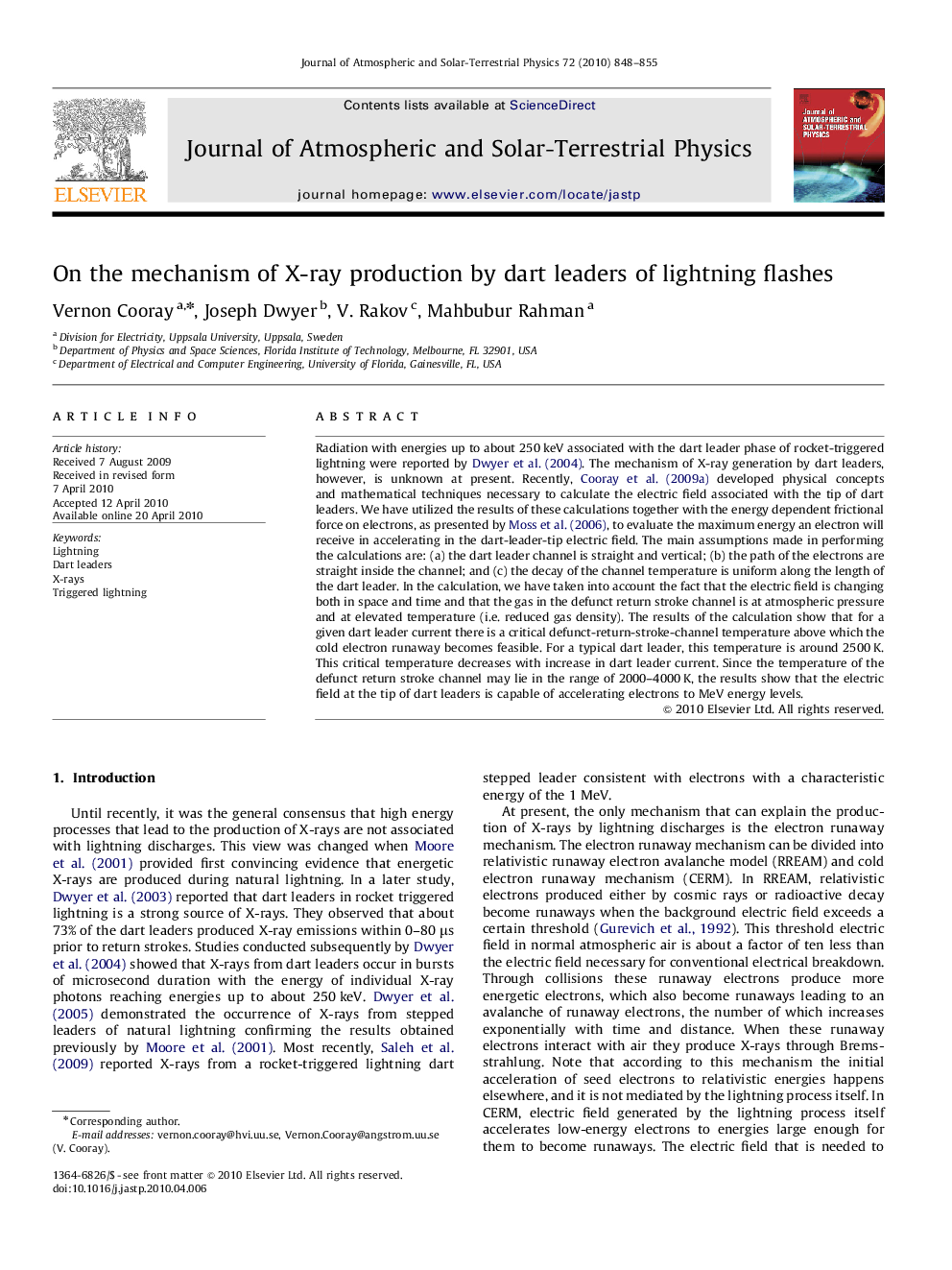| Article ID | Journal | Published Year | Pages | File Type |
|---|---|---|---|---|
| 1777292 | Journal of Atmospheric and Solar-Terrestrial Physics | 2010 | 8 Pages |
Radiation with energies up to about 250 keV associated with the dart leader phase of rocket-triggered lightning were reported by Dwyer et al. (2004). The mechanism of X-ray generation by dart leaders, however, is unknown at present. Recently, Cooray et al., in pressPlease provide complete bibliographic details for Ref. cooray e al., in press and Saleh et al., in press if available. and Cooray et al., 2009a developed physical concepts and mathematical techniques necessary to calculate the electric field associated with the tip of dart leaders. We have utilized the results of these calculations together with the energy dependent frictional force on electrons, as presented by Moss et al. (2006), to evaluate the maximum energy an electron will receive in accelerating in the dart-leader-tip electric field. The main assumptions made in performing the calculations are: (a) the dart leader channel is straight and vertical; (b) the path of the electrons are straight inside the channel; and (c) the decay of the channel temperature is uniform along the length of the dart leader. In the calculation, we have taken into account the fact that the electric field is changing both in space and time and that the gas in the defunct return stroke channel is at atmospheric pressure and at elevated temperature (i.e. reduced gas density). The results of the calculation show that for a given dart leader current there is a critical defunct-return-stroke-channel temperature above which the cold electron runaway becomes feasible. For a typical dart leader, this temperature is around 2500 K. This critical temperature decreases with increase in dart leader current. Since the temperature of the defunct return stroke channel may lie in the range of 2000–4000 K, the results show that the electric field at the tip of dart leaders is capable of accelerating electrons to MeV energy levels.
